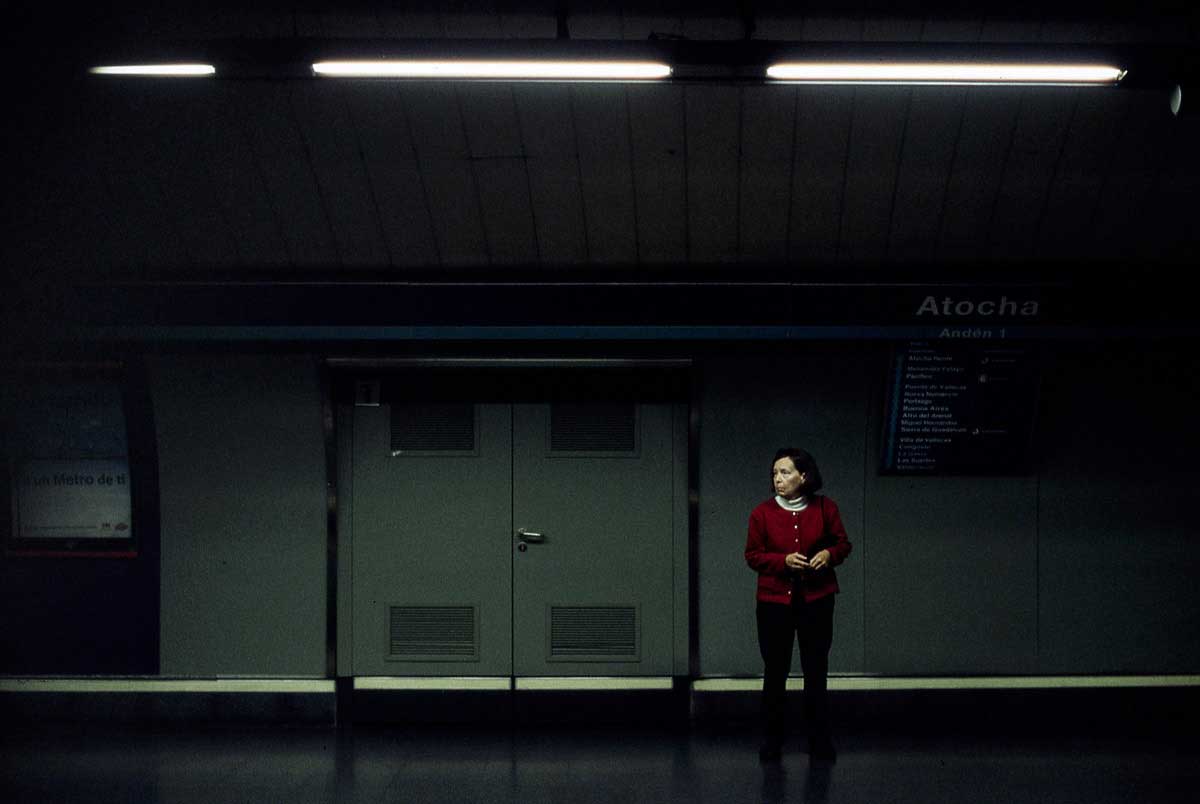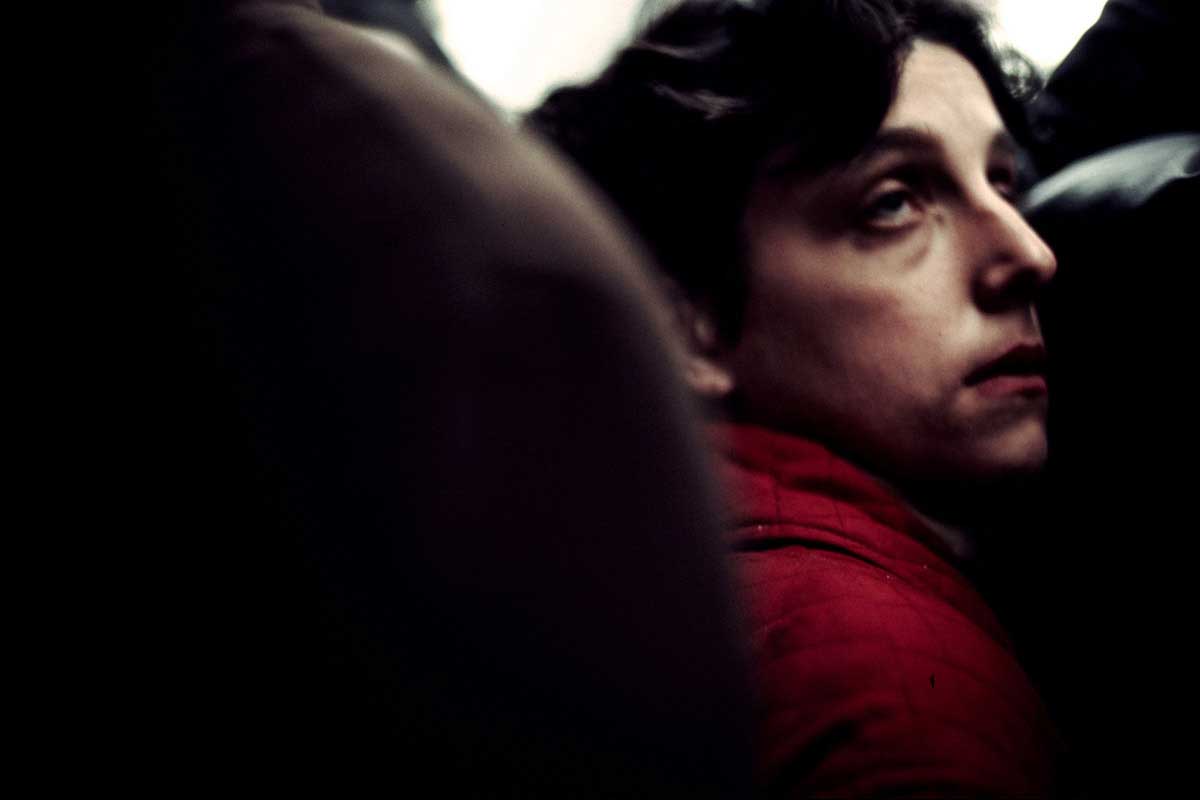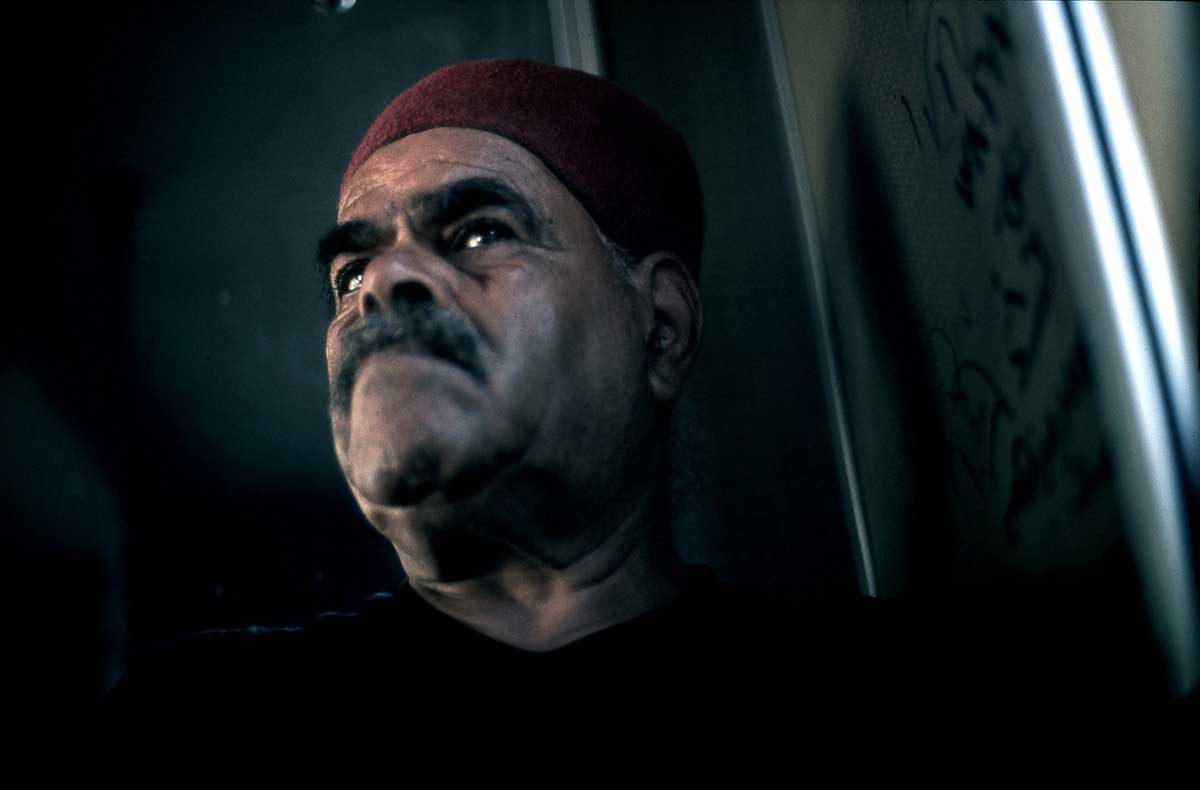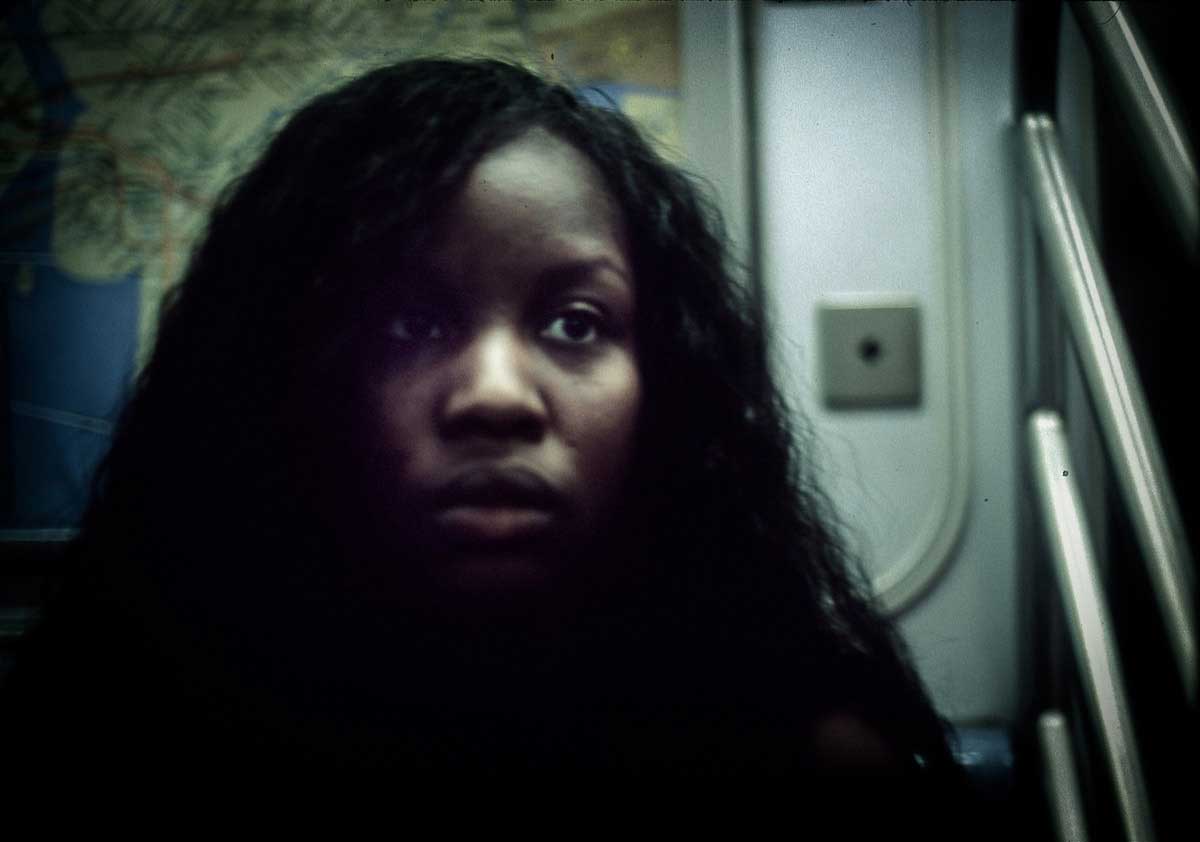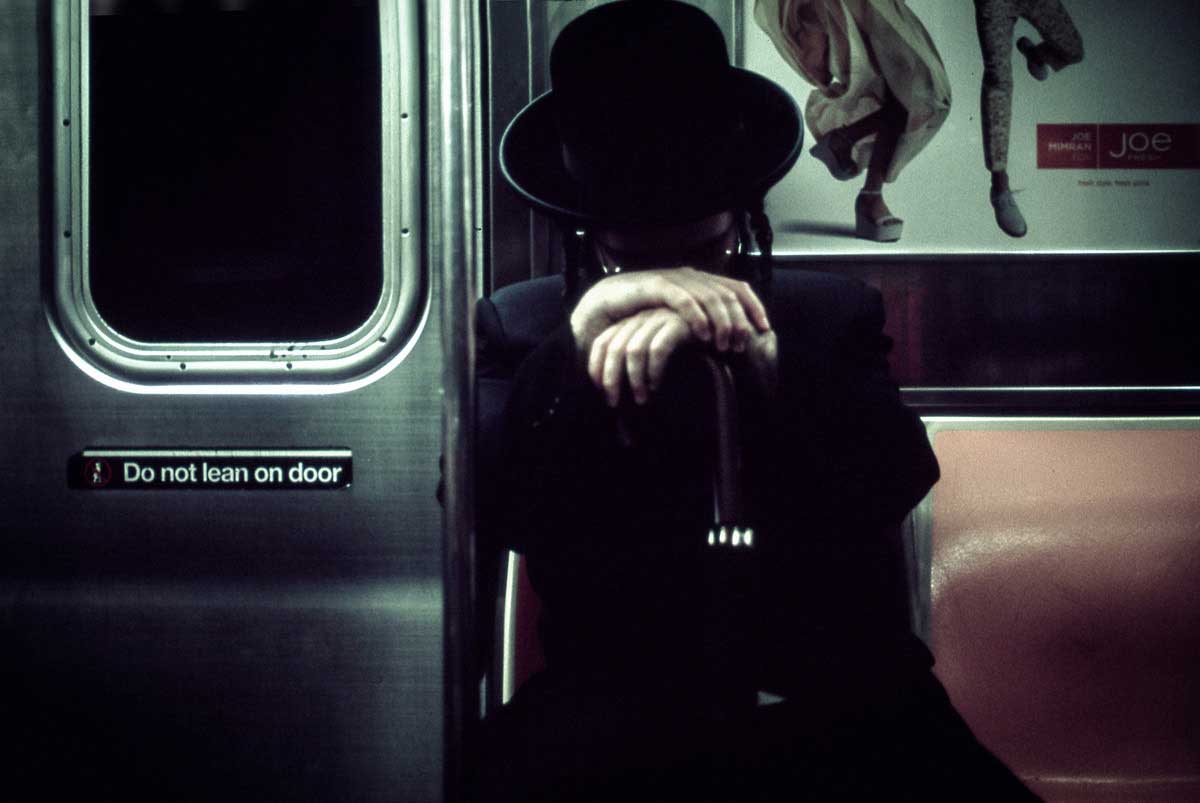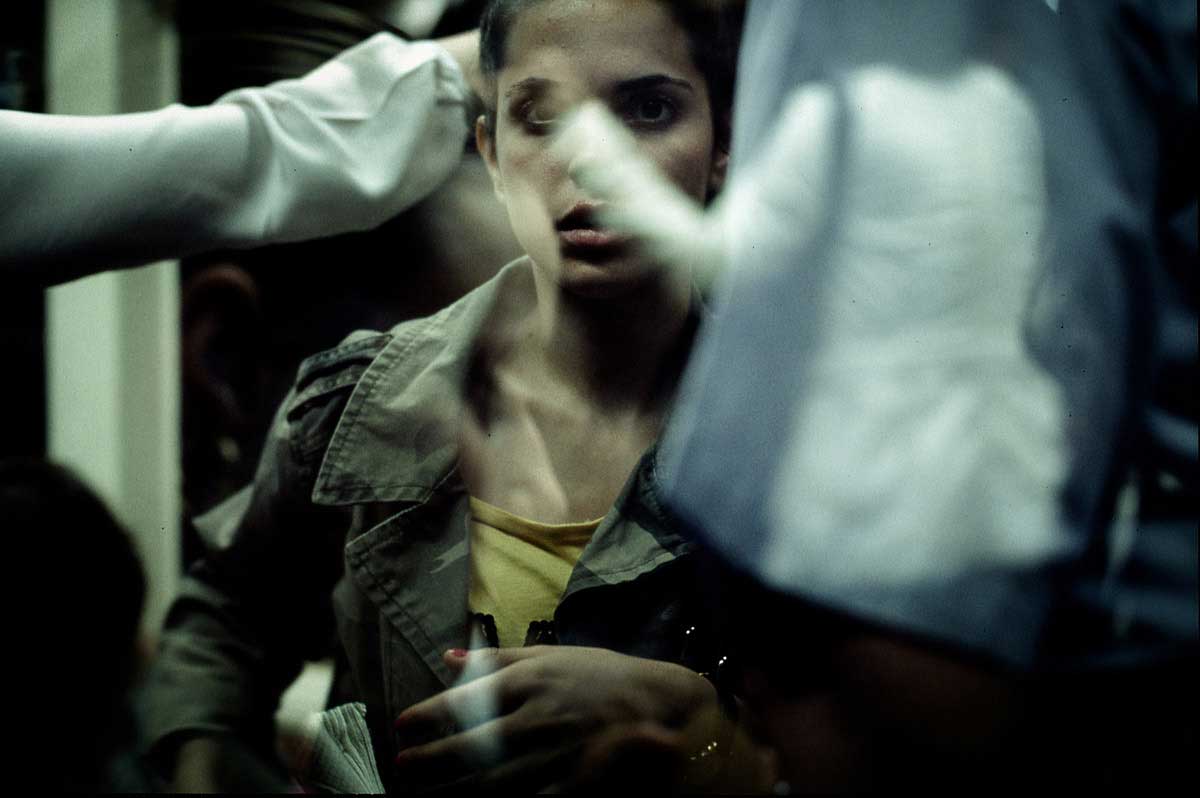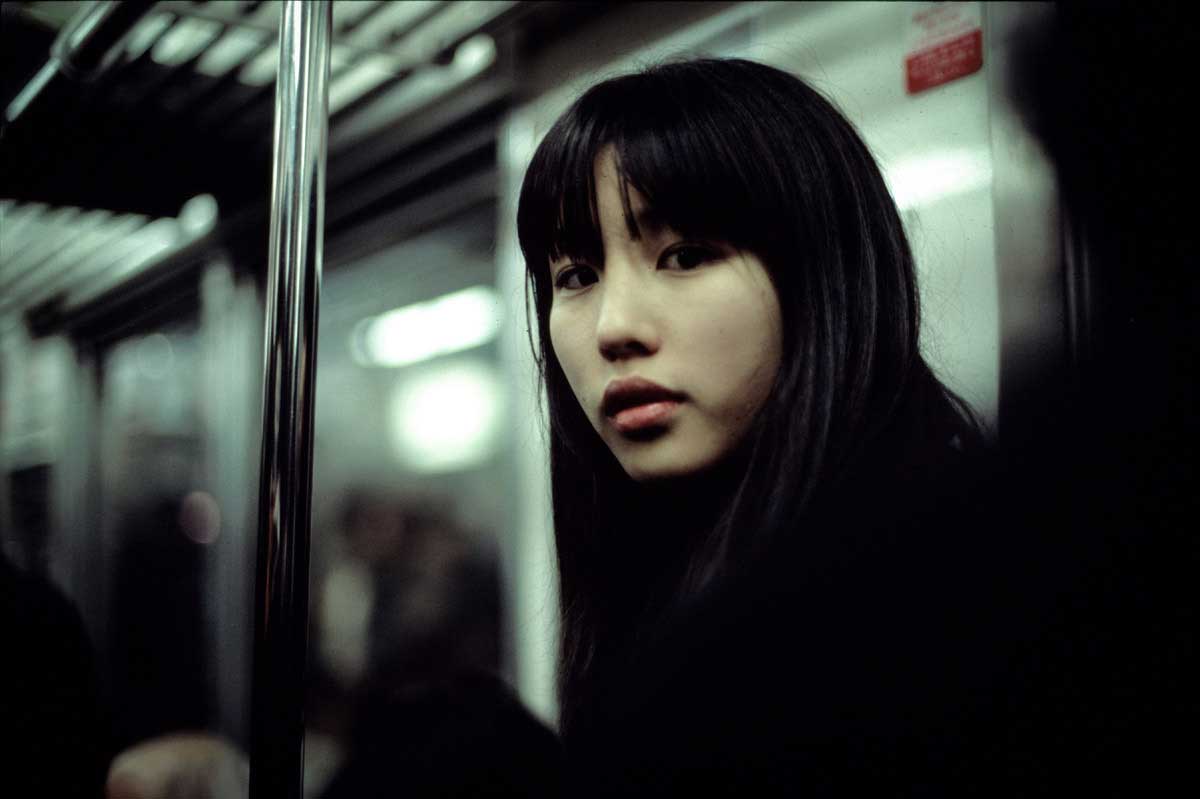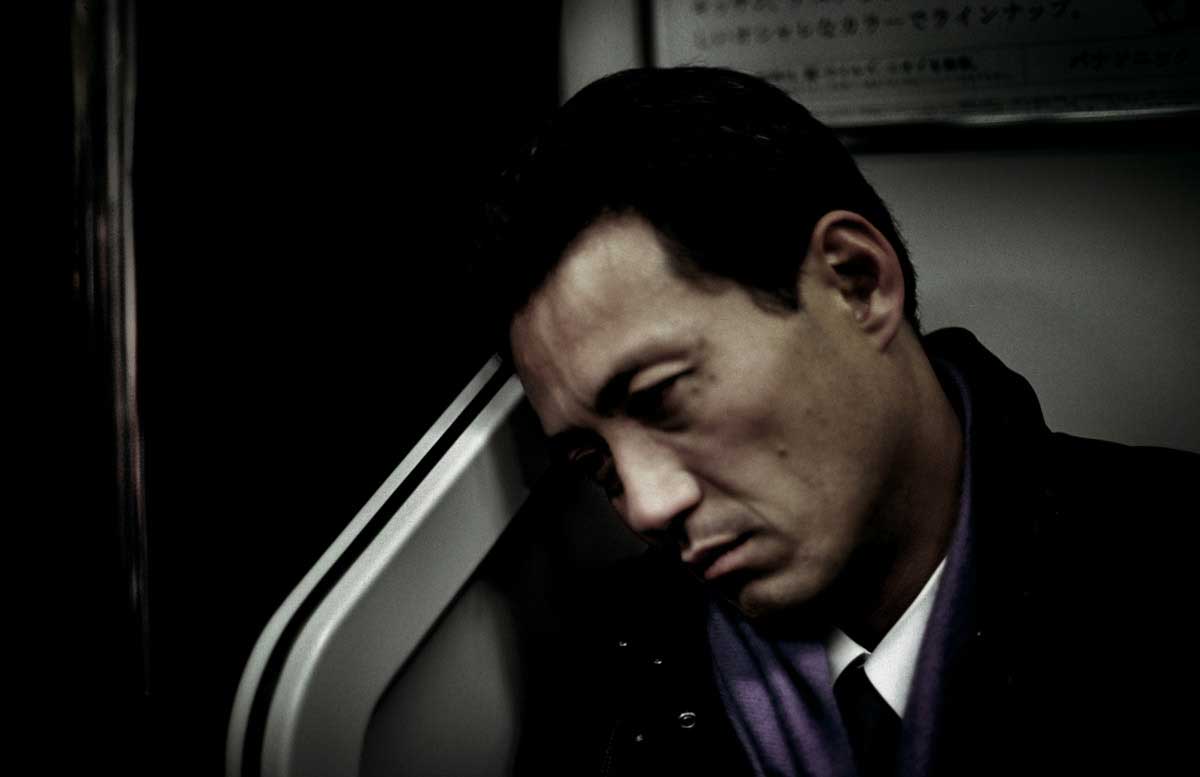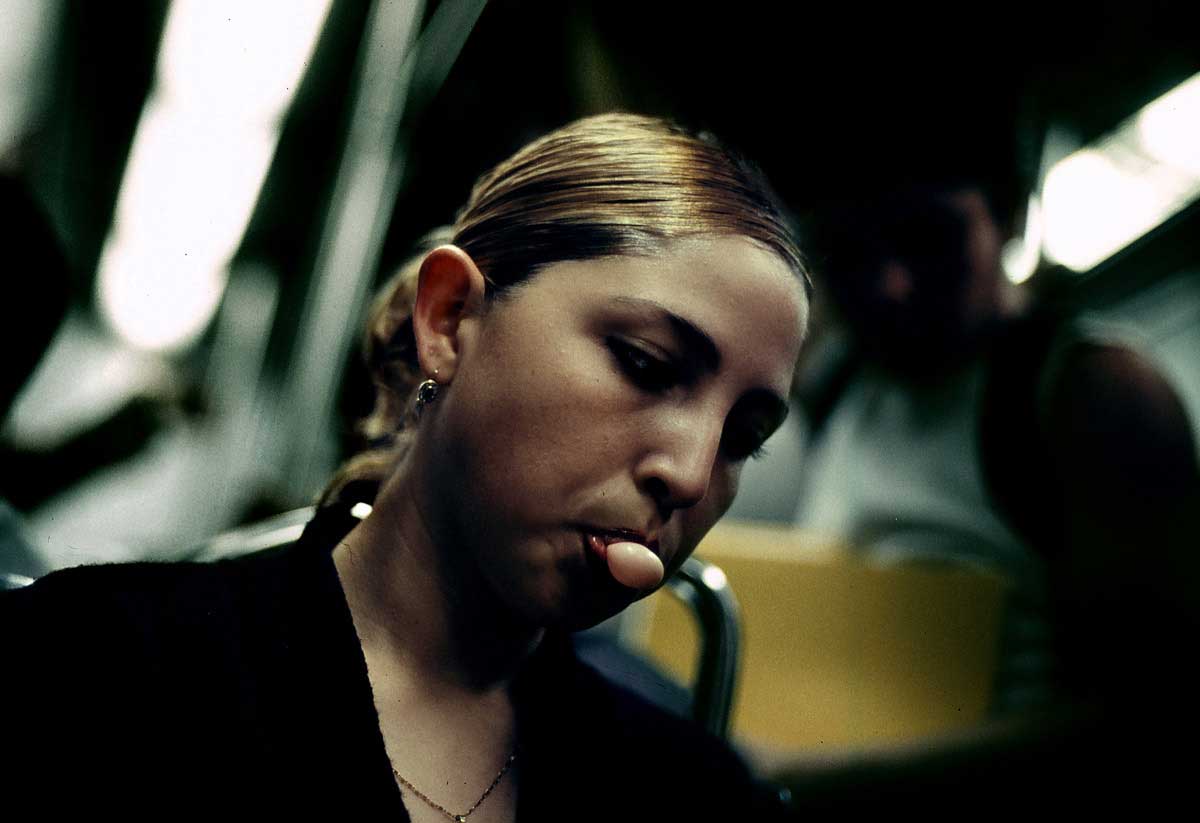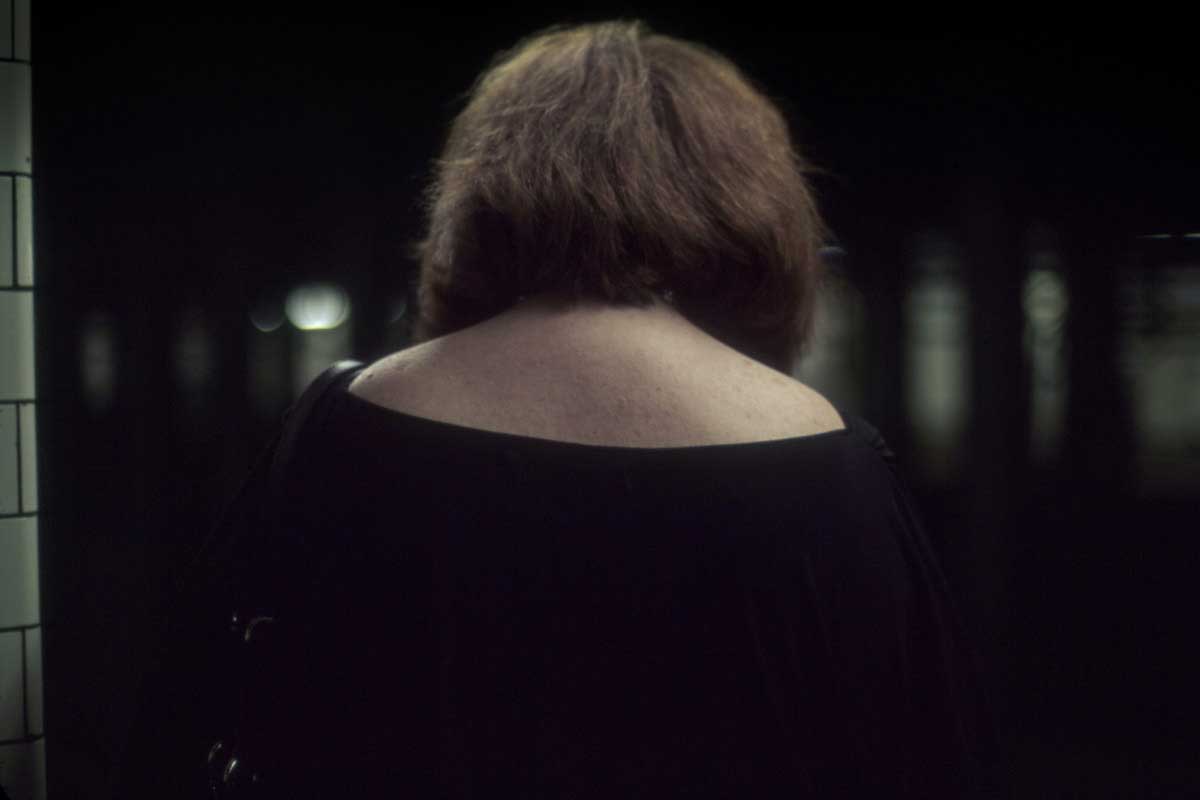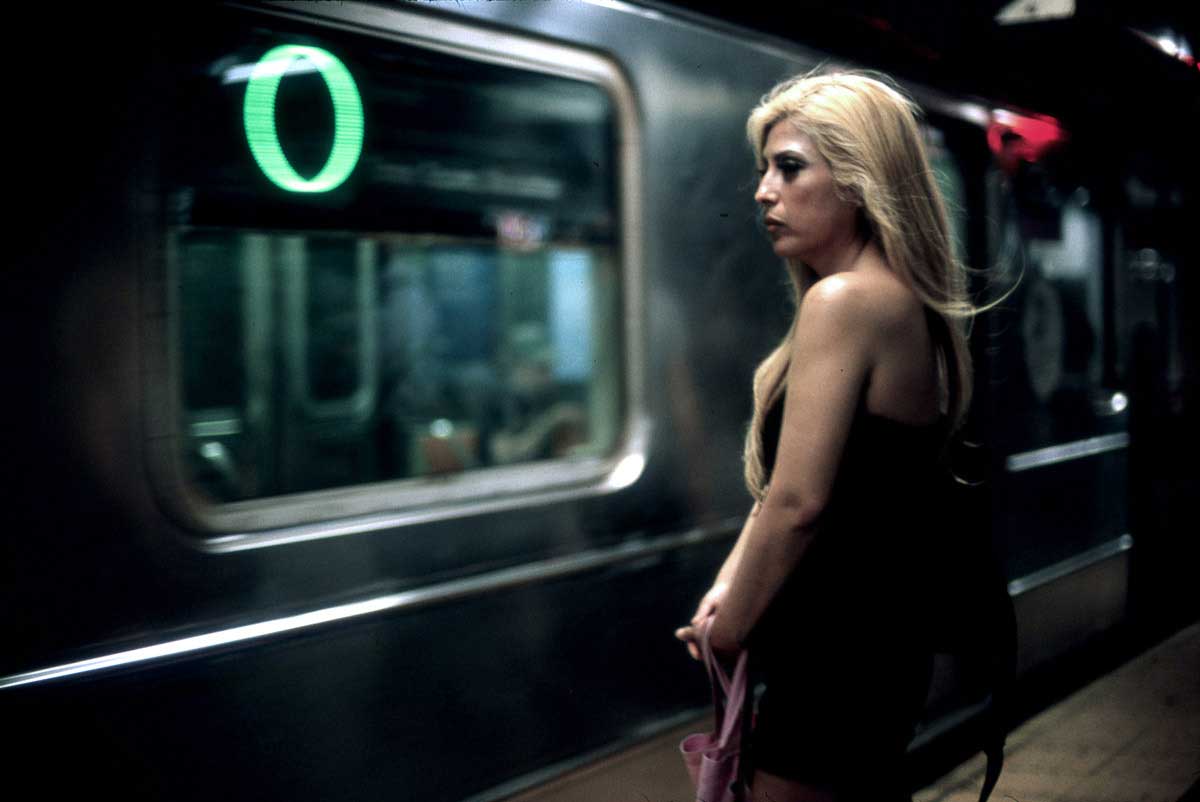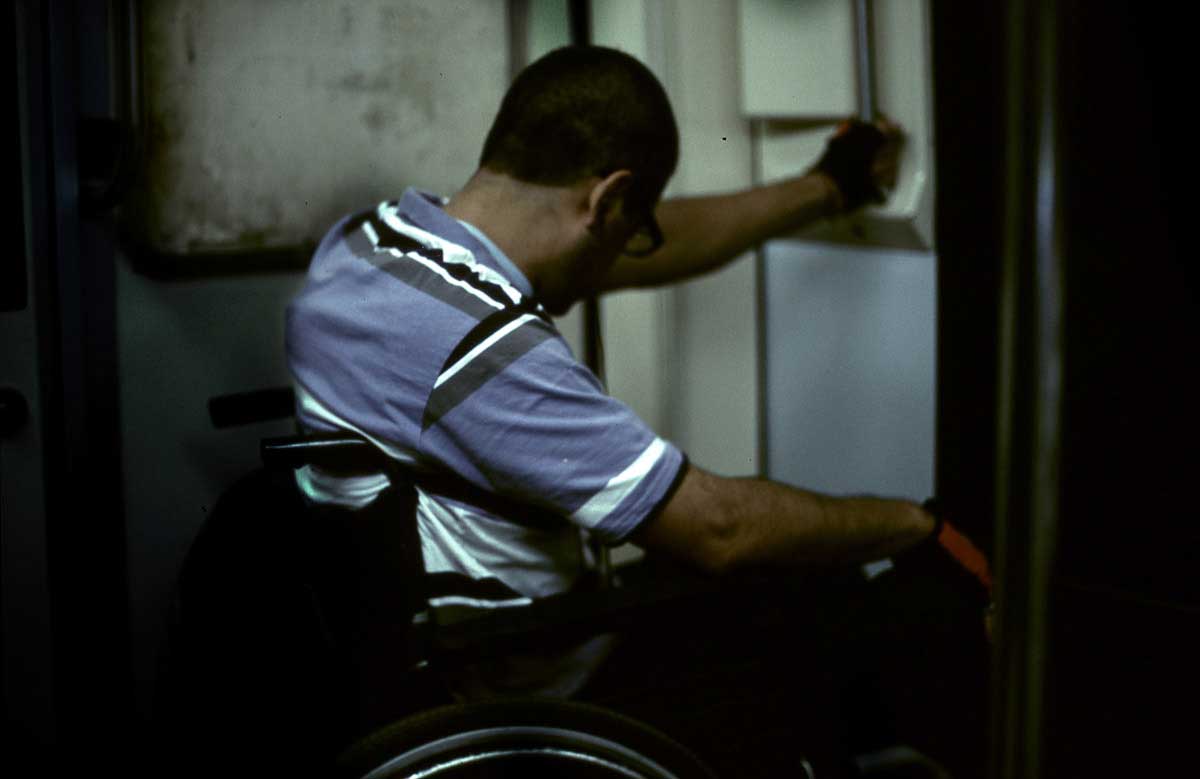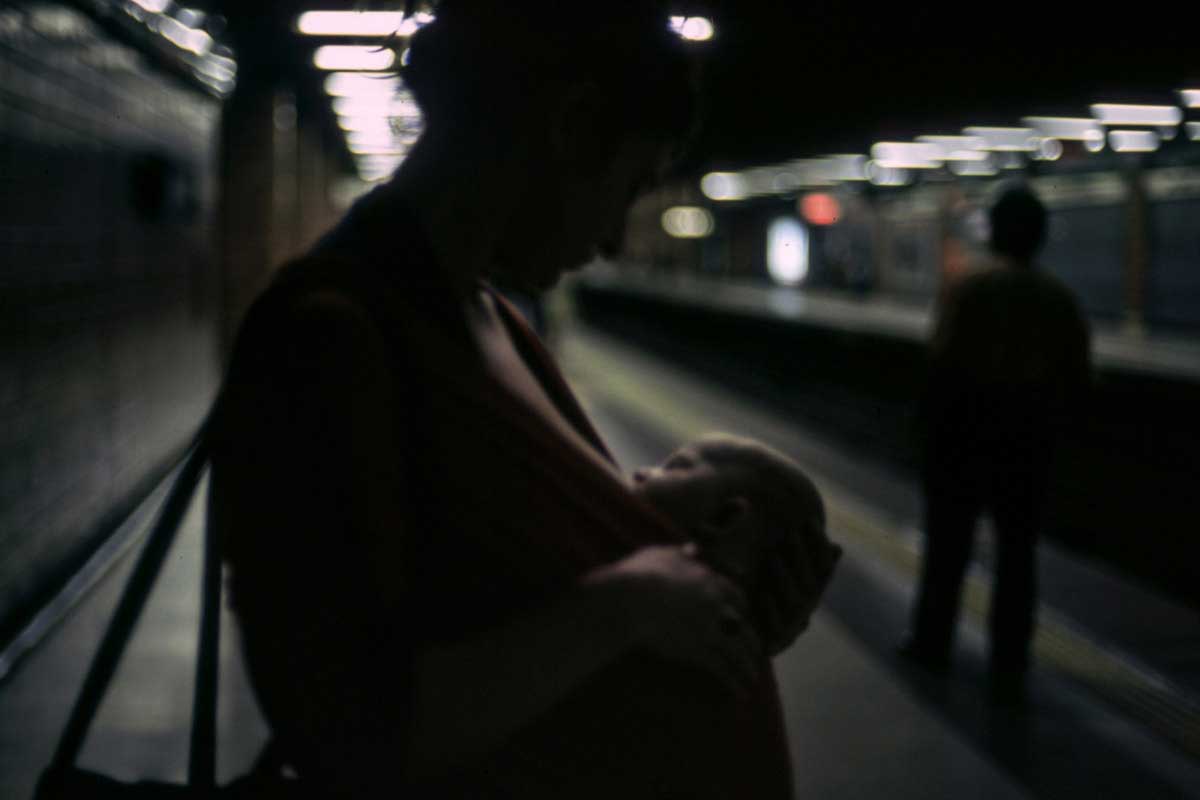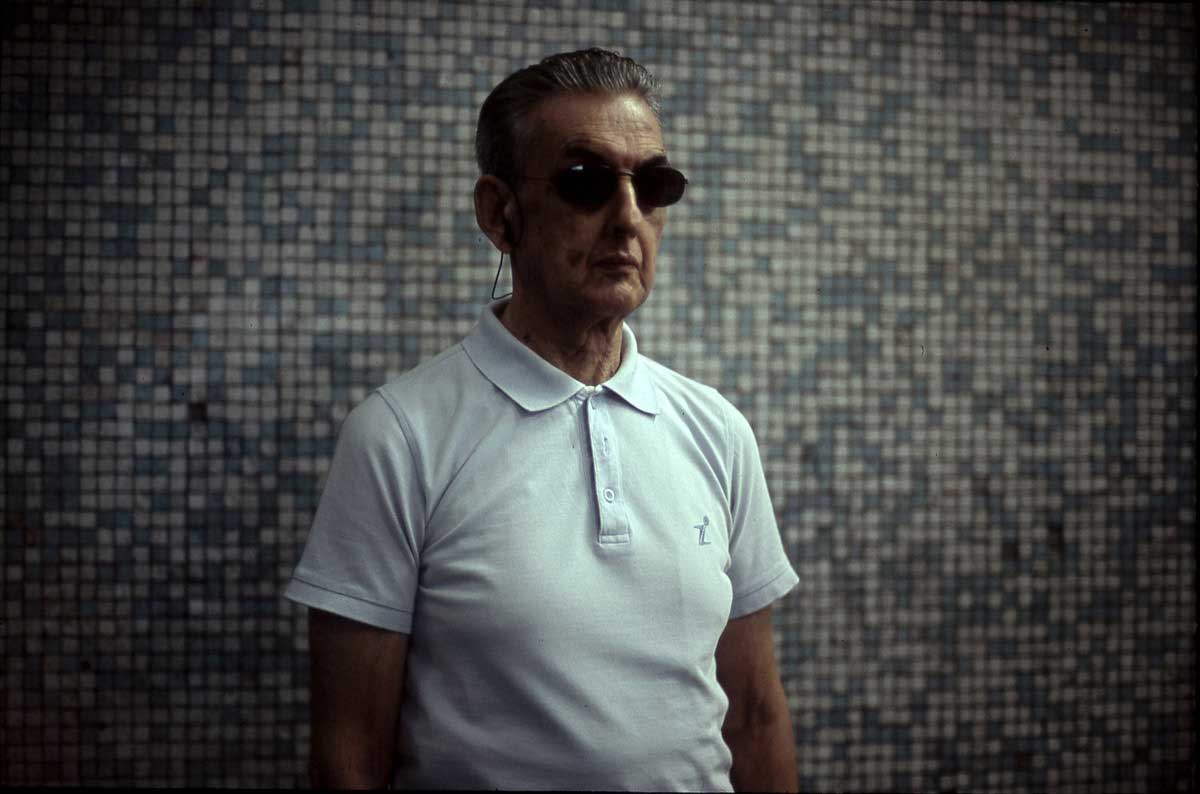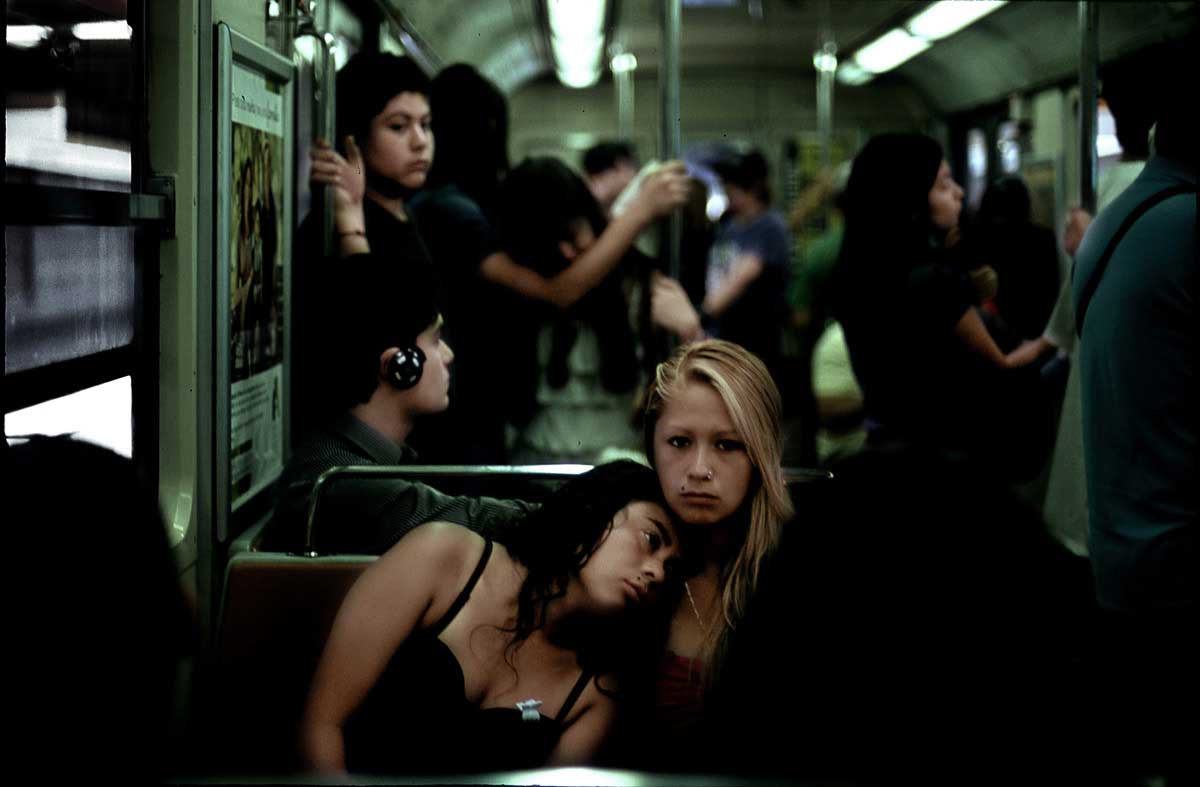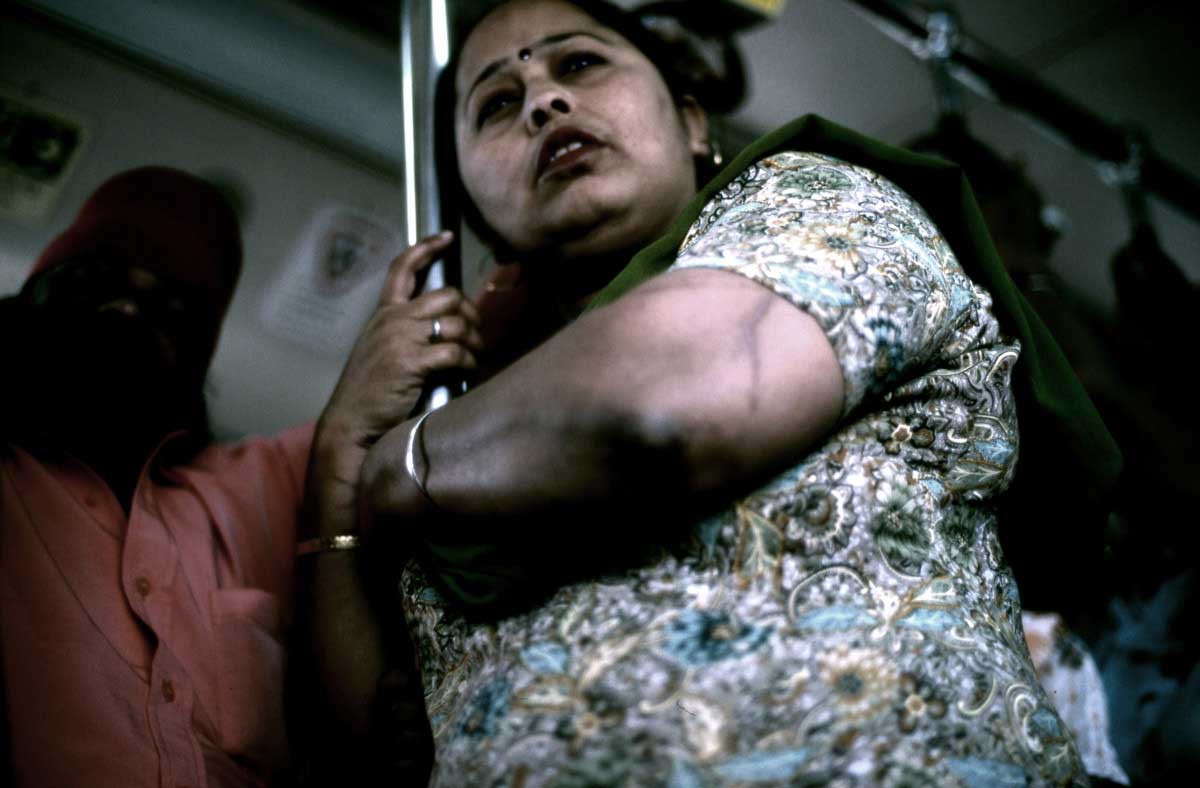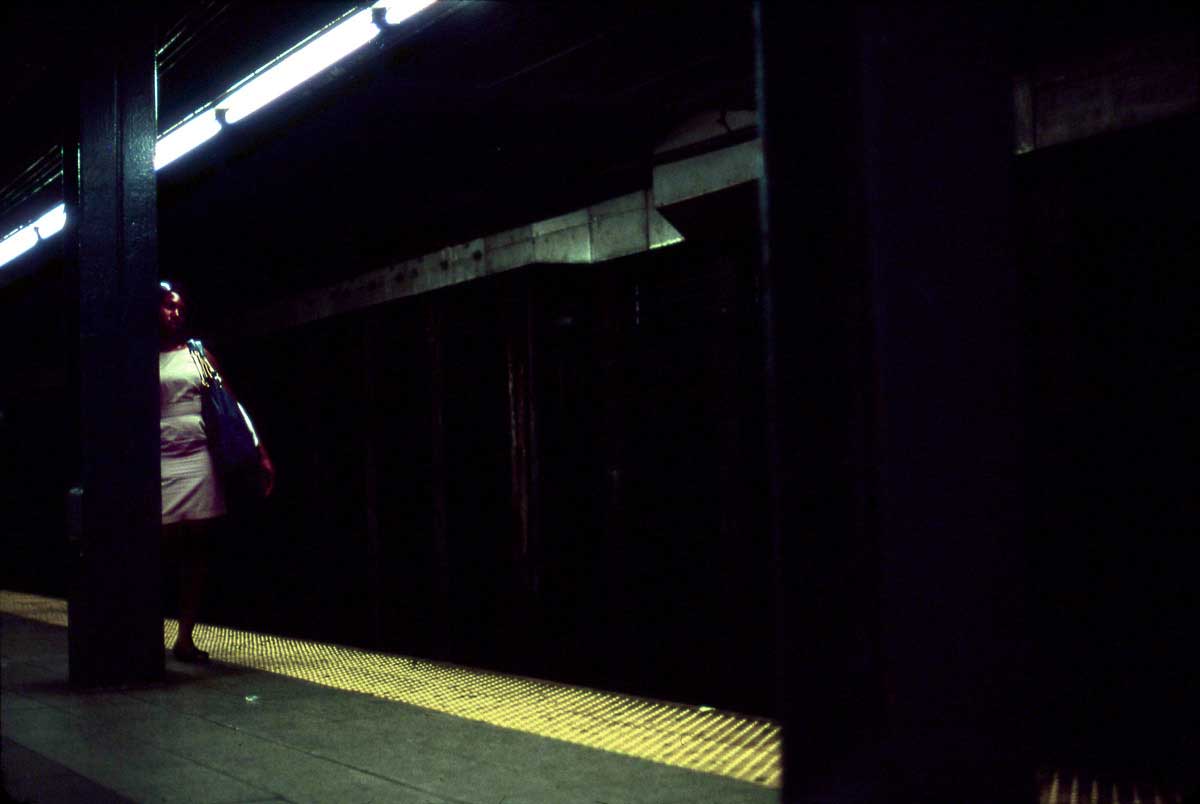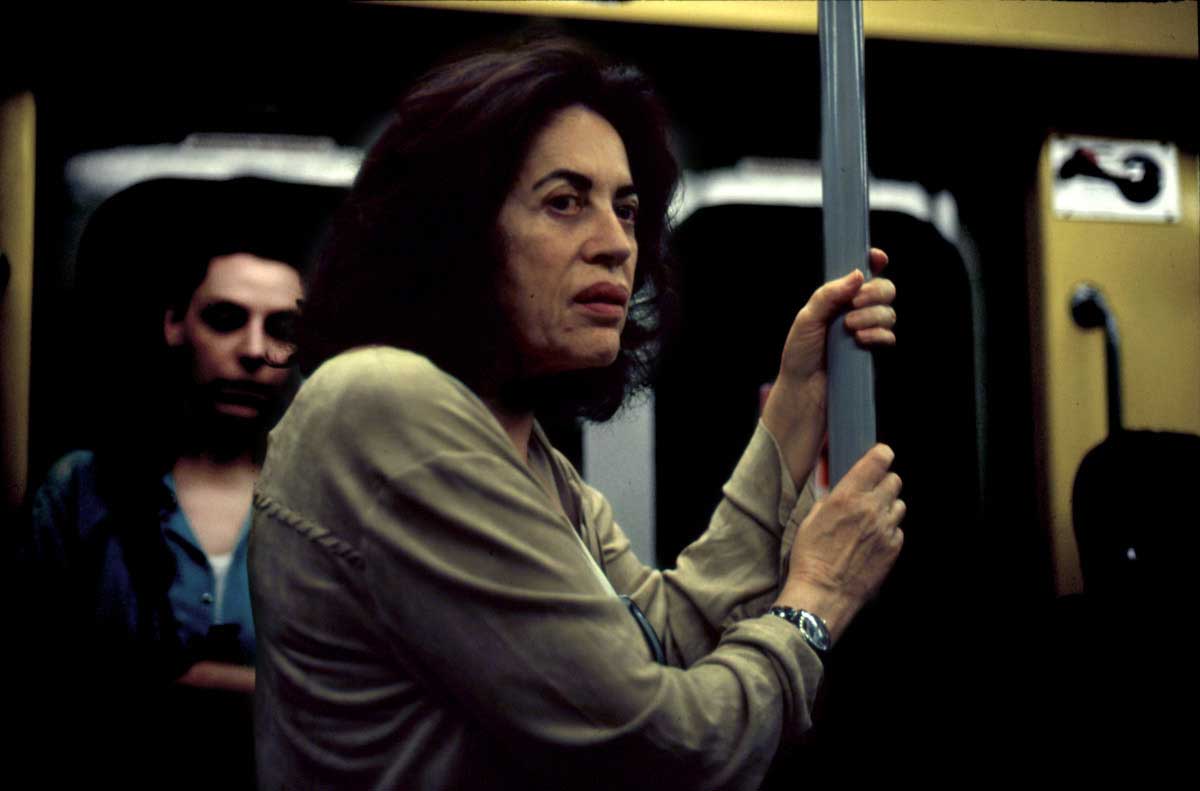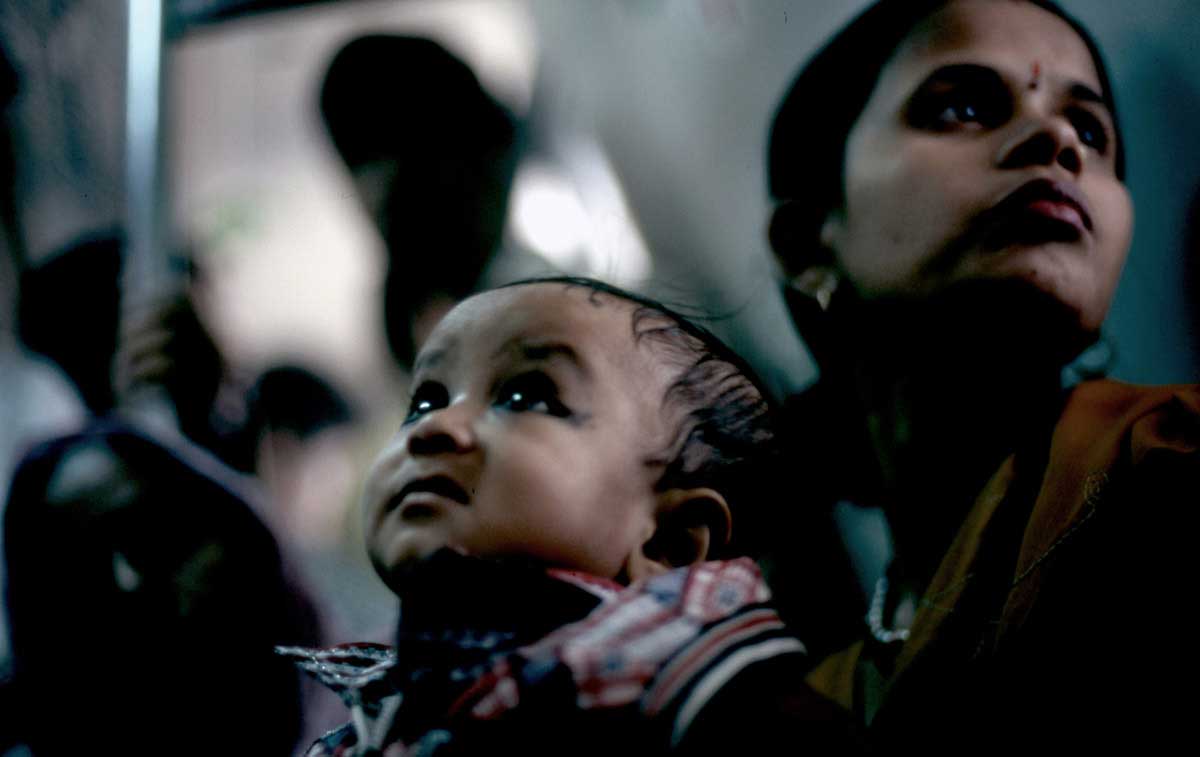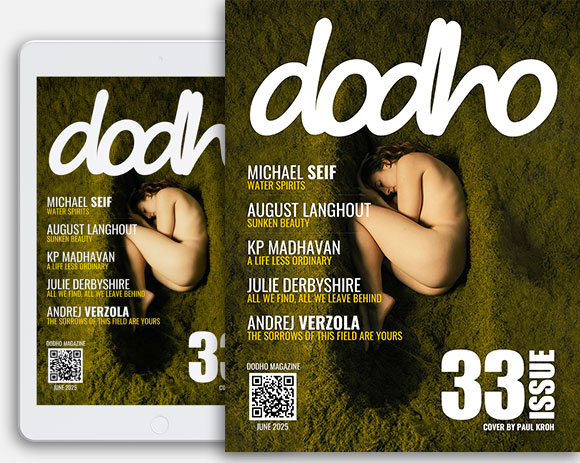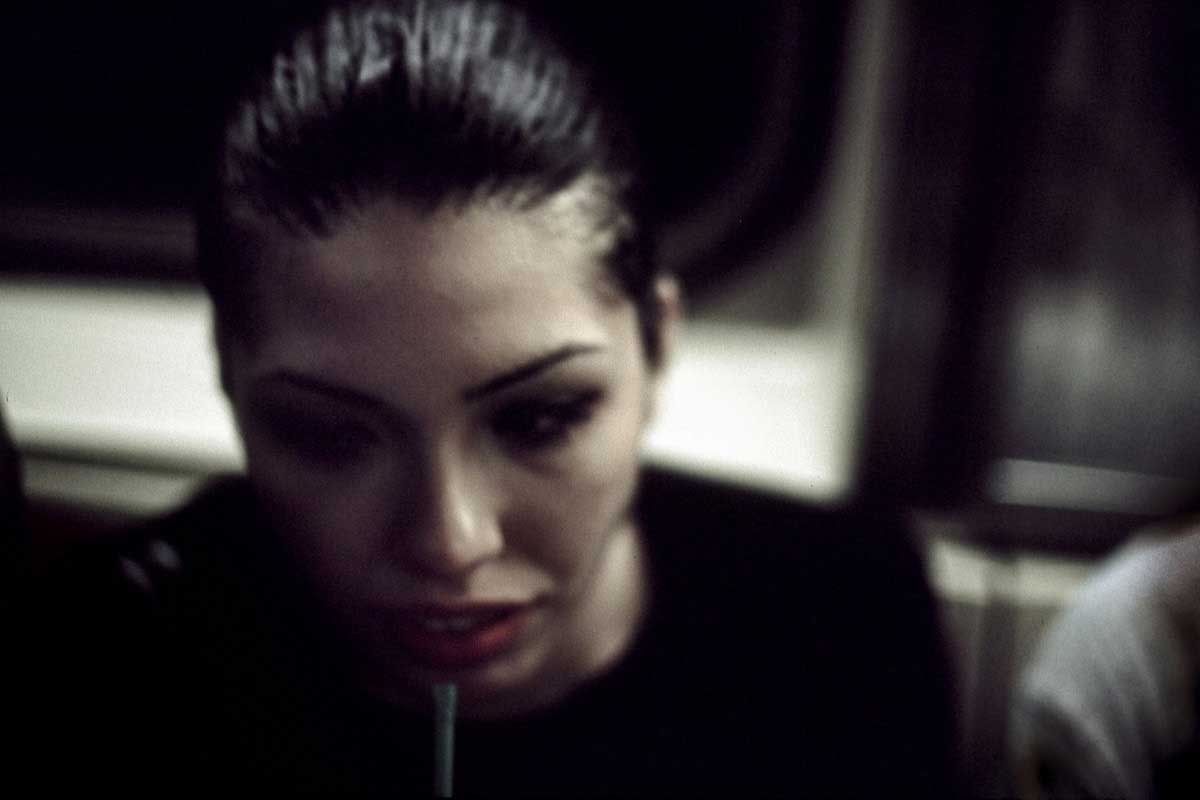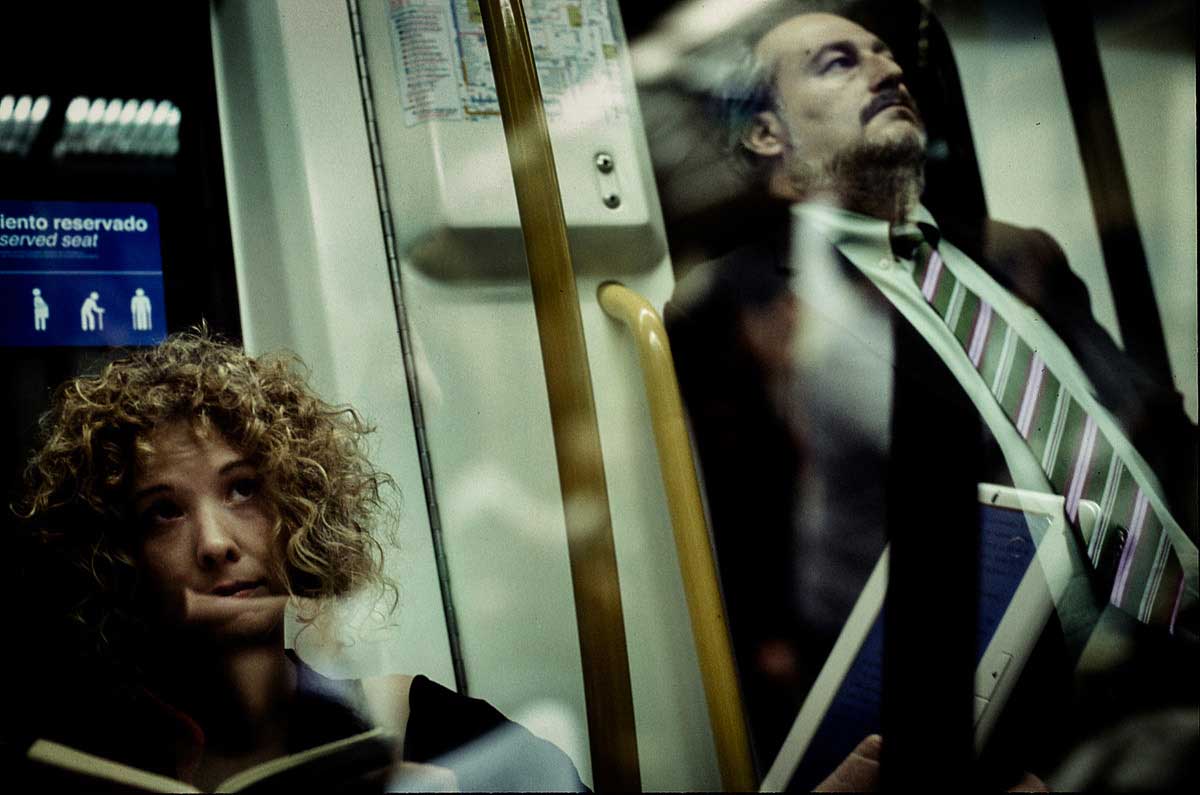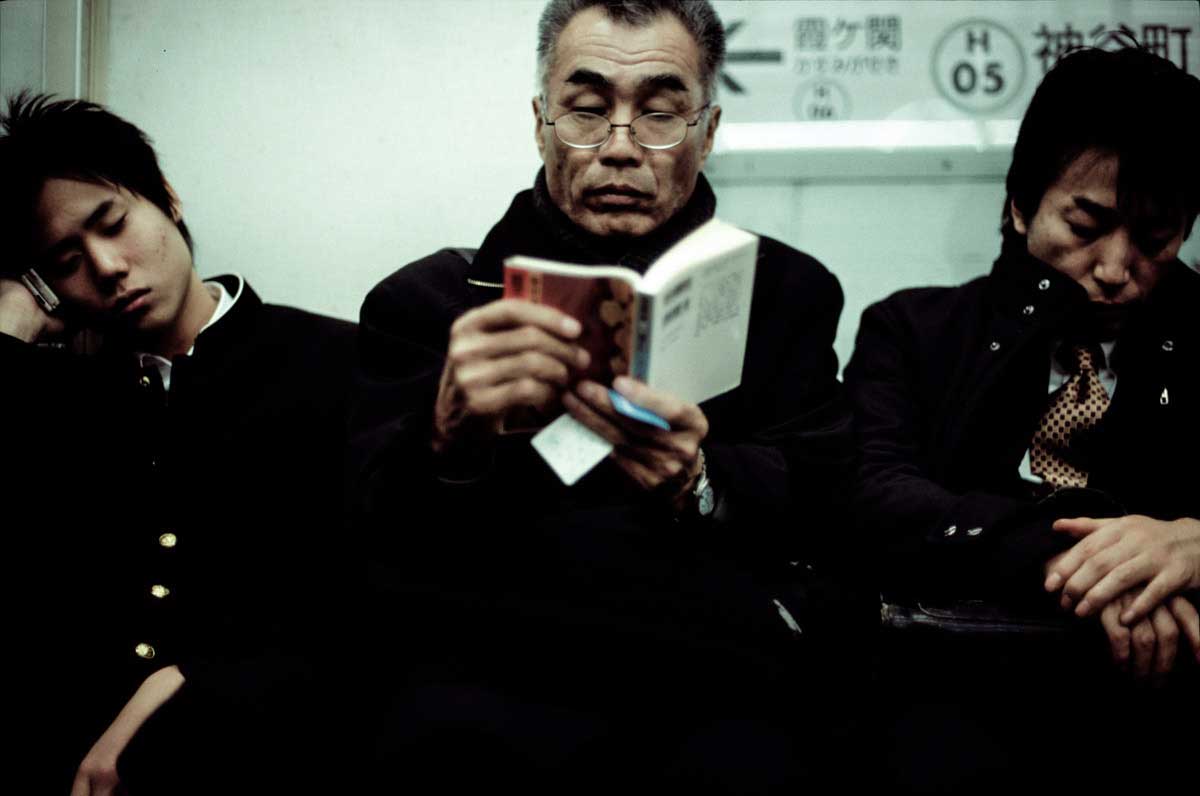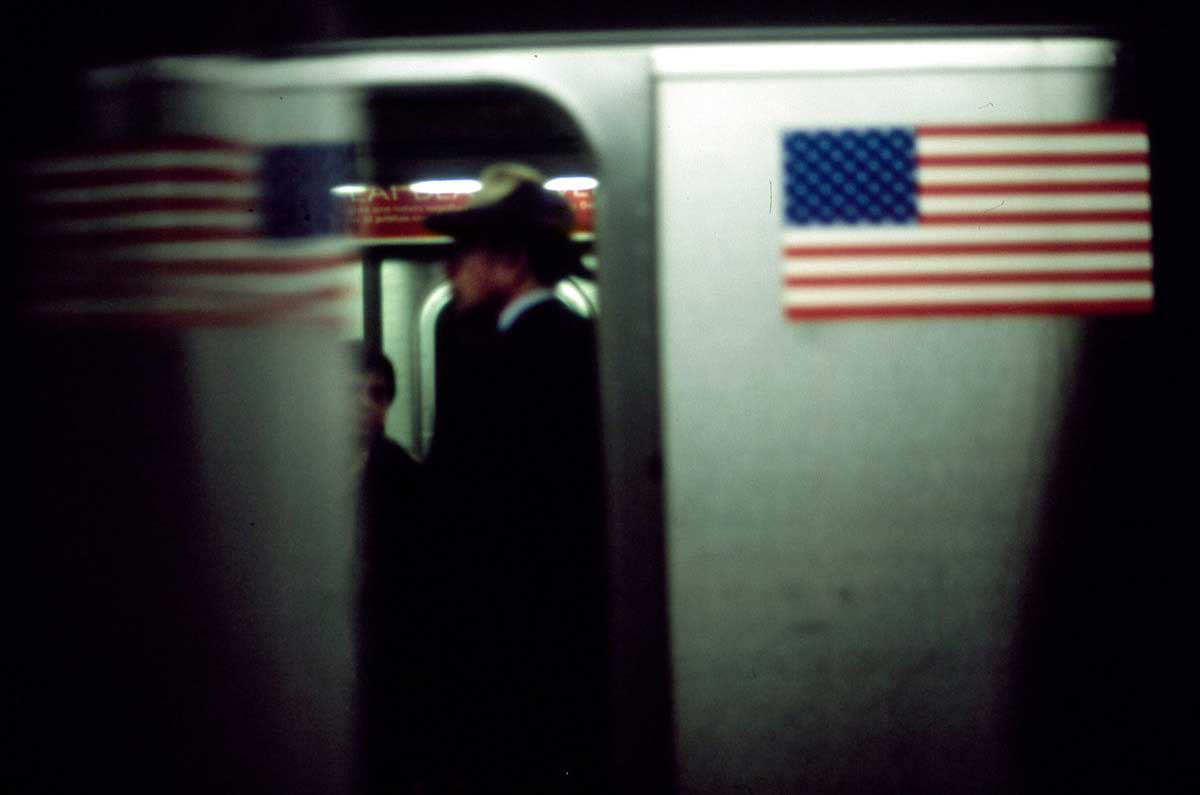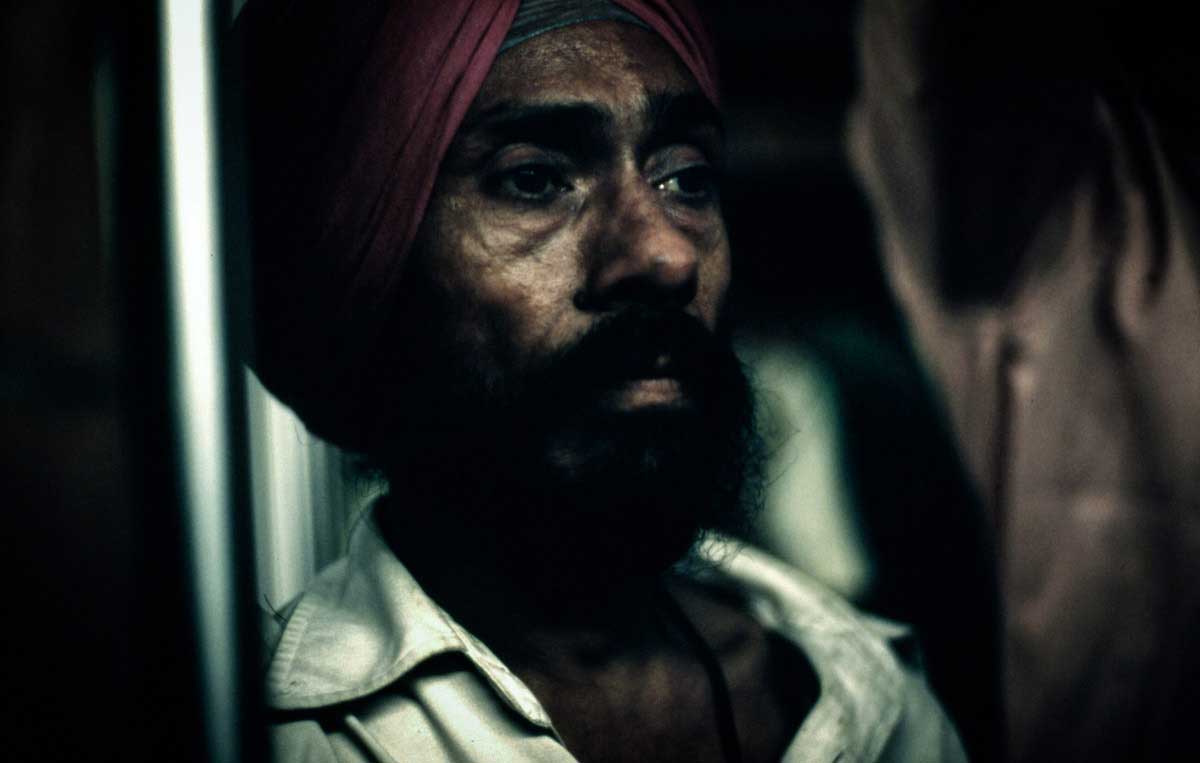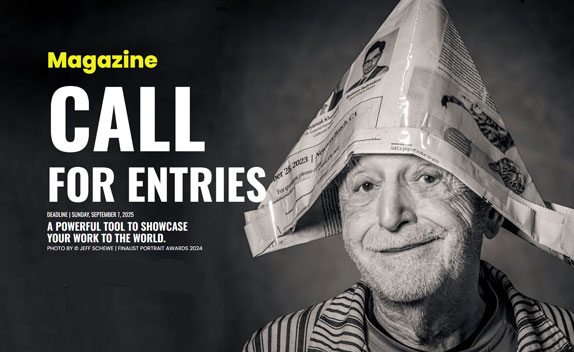“The guard is down and the mask is off, even more than when in lone bedrooms (where there are mirrors). People’s faces are in naked repose down in the subway.”
Walker Evans
Portraits, 35mm colour slides, from 12 different underground networks worldwide,(Paris, Rome, London, Napoli, Oslo, Madrid, New York, Mexico DF, Santiago de Chile, Tunis, Delhi and Tokyo).
This work is reflected in and transcends the images shot by Walker Evans in the New York subways in the 40’s. It doesn’t make reference to any specific place but to distant and different cities which appear here as if closed in one single space. The faces, which express the suspension and the naked rest of the passengers that use this means of transport every day, become metaphors as much of human essence as its modern dimension. Like many “flaneur” the people transit, linger, wait and leave. Behind the reality of constant movement is the veil of constant suspension.
“Arriving at each new city, the traveler finds again a past of his that he did not know he had: the foreignness of what you no longer are or no longer possess lies in wait for you in foreign, unpossessed places.”
Italo Calvino, Invisible cities
Martino Chiti was born in Livorno, 1976. He realized documentaries and photo reportages, as well as working with video and new media during festivals of art and entertainment related to music and visual arts. Photographer, filmmaker and video artist, he’s always looking for new experimentations.
TEXTS FROM THE BOOK “SUSPENDED CITIES PORTRAITS FROM THE UNDERGROUND”
THE RIVER OF OBLIVION
Those who love analogic or photochemical photography -and Martino loves it-use the term “latent image”; with this term, they refer to the infinitesimal trace that the light leaves,when caressing the microscopic grain of silver contained in the film, which, once developed, will form the visible image.
They seem immersed in the spring of oblivion, in the Lethe river, waiting to drinkfrom its waters in order to return to their lives, or to different lives and forget what they have experienced in the underworld.Travellers of any city, a bright one, a dark one; travellers who remain sleepy, latent, hidden and forgotten untill somebody or something make them visible, thus avoiding the deaathly embrace of the unloved. [Text: Fernando Marcos Ibañez]
PREFACE
This latent image will remain concealed, hidden, suspended in time untill something or somebody revearls it nad makes it visible or, maybe, it will be forgotten for ever if no one does. The silver mark continues to exist, remaining in a never ending hibernation and it will never become a visible image, a real emotion.Martino’s travellers pass through the arteries of the city that pulsate and beat, suspended in a numbness that they all have in common, that of their lives, thet of life itself.
Cities suspended in the space and time of contemporaneity. Alienated cities in which the masses fragment in solitude. (In)visible cities populated by presences lost somewhere…. In the world, in others, in themselves. Trains that ferry people from one place to another, from one role to another in their lives; passages upon passages in which the public and private come together, fragments of lives in movement. The underground becomes the modern limbo in which man, tired of his own struggle to exist, sinks into the dimension that Heidegger calls the “nobody in which every “to be” has aban- doned itself in the indi erence of it’s “to be together”.
In this moment, in this manner of existential abandon and sus- pension man is spied on and surprised by the photographer who, restless âneur, moves with the senses tense in the pressure-op- pression of the bodies and faces, through the unknown and silent solitude that casually brush our life and that, stolen by a photo- graph, force us to observe them and re ect on ourselves. Looks of ordinary expressive power, absorbed, absent, distracted, disoriented, lost, transverse; dialoguing or self referential, at the same time disoriented and disorienting, disturbing to such a degree as to arouse in us ambivalent feelings of fascination and resistance.From the One emerges the multiple, for superimposition and for peeling, for fragmentation and growth of situations, through the concatenation of the images.
The two levels atten out on one another, the two dimensions generate each other: the metro, in its nontransparent complexity and immensity, multiplies itself in twelve cities, di erent in their phantasmagoria, but overlapping and replaceable; the individual is altered and disintegrates in the swarming crowd of individuals returning to the One standardizing itself. From individual men and individual women comes the birth of the “subway crowd” which as Benjamin writes “arouses feelings of anxiety, disgust and fear in those who rst look it in the face”; the mass of humanity where we feel confused, in which we perceive ourselves duplicated and repeatable, in which we see and we recognize foreigner and strangers… in which I found myself, identical to the others, lost, suspended. That moment in which movement stops and the image sets. [Text: Linda Lombardo]
About Martino Chiti
Livorno, 30/12/1976. Photographer and videomaker, he moves through multiple photographic and video environments: reportage, documentary, arts and events. Member of Proforma videodesign along with Nicola Buttari working with virtual scenography for theatre and videomapping for big events. He carries on the Miranda Project along with Daniele Stefanini, using big paper/glue photographic installations in urban contexts aim to re-evaluate spaces and create a different way of cultural and social communication. In 2016, he published his first photobook «Suspended cities, portraits from the underground», twelve different subways from all around the world, edited by Crowdbooks. He is constantly produces visions about human being and its contexts through new experimentation. [Official Website]
